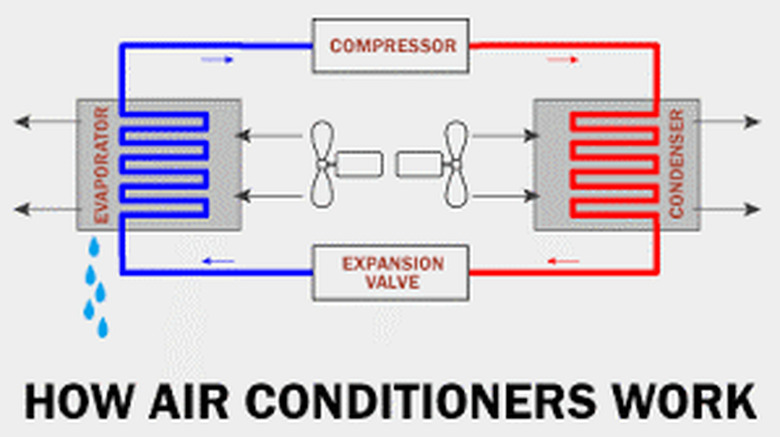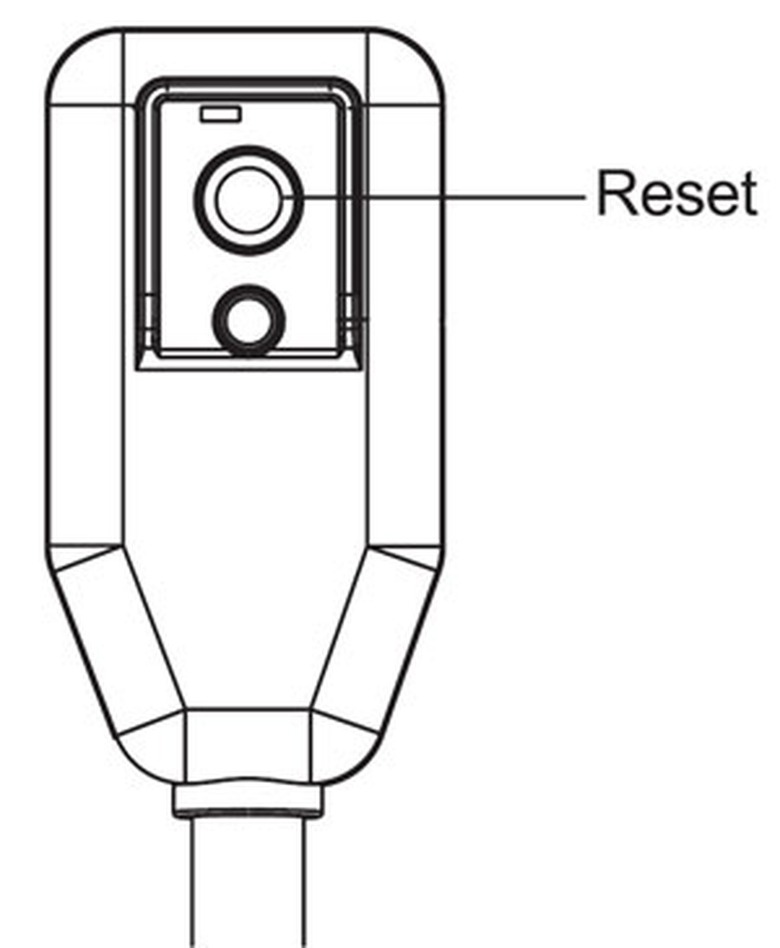Why Is The Air Conditioner Window Unit Not Blowing Cold Air?
If you have a window air conditioner not blowing cold air but running, chances are you can DIY the repair without much trouble. Barring a problem with the compressor, which is the pump at the heart of the refrigeration system, most causes of a window air conditioner not cooling are fairly minor. In fact, there may not even be a problem with the window AC unit itself. Sometimes, gaps around the unit are letting in warm air from outside, and they just need to be sealed.
It's important to know your limitations when dealing with air conditioners. For example, adding refrigerant to a unit requires not just training and equipment but also EPA certification. Considering the cost of a service call — not to mention new parts — it's often cheaper to replace a malfunctioning window AC unit that needs professional service. Today's best window air conditioners will save you even more money in the long run because they're more energy efficient than older models.
Causes of Window Air Conditioner Not Cooling
|
Problem |
How to Fix It |
|
Wrong temperature setting |
Adjust the thermostat |
|
Power overload |
Press the window air conditioner reset button |
|
Insufficient airflow |
Clean the air filter, coils, and grilles |
|
Evaporator coils have iced over |
Turn the unit off to defrost it |
|
Condensate drain is clogged |
Clear the drain tube |
|
Insufficient refrigerant |
Add more refrigerant (pro required) |
|
Compressor or fan malfunctioning |
Repair the part (pro required) or buy a new unit |
Window AC Unit: How It Works
Window AC Unit: How It Works
A window AC unit consists of a refrigeration system similar to the one in a refrigerator, one squirrel-cage blower that circulates cold air into the room, and a bladed fan that blows hot air out the rear of the unit. The refrigeration system has four main components: a compressor, a condenser coil, an evaporator coil, and an expansion valve. The coils form a continuous loop that extends away from the compressor and back to it, and they contain a refrigerant, which is an inert substance with a low boiling point. Here's how the refrigeration cycle works:
- The compressor pressurizes the refrigerant in the condenser coil to turn it into a liquid. This process releases heat, so the condenser coils, which are on the outside of the unit, get hot, and a fan blows away the hot air.
- The pressure forces the liquid through a pinhole opening called the expansion valve, and some of the liquid flows through the opening into the evaporator coil.
- Because there is no pressure on the opposite side of the valve, the refrigerant vaporizes. This process draws heat out of the surrounding air, and the evaporator coil becomes cold. A blower fan blows air through the cold coil and into the room.
- The vapor cycles back into the compressor, where it gets re-pressurized and turns back into a liquid, and the process repeats.
An air conditioner also dehumidifies as moisture in the air condenses onto the evaporator coils and drips into a drain pan. As long as there is enough airflow, the coils stay relatively dry, and the water flows out of the drain pan through an opening on the outside of the unit.
Window AC Turns On But No Air
Window AC Turns On But No Air
When a window AC turns on but no air comes from the grille, the first thing to check is the thermostat on the unit. You may have to set it to a lower temperature to get the compressor and fans to start. You should feel cold air as soon as you hear the rumbling of the compressor, but if not, here are some possible reasons.
The Air Filter Needs Cleaning
Lift the front cover, pull out the filter and hold it in front of you. If you can't see anything on the other side, air can't pass through the filter, and you need to clean or replace it. You can clean most filters with soap and water, but if the filter isn't cleanable or it's just super dirty, it's better to buy a new one.
The Coils Are Dirty
Dirt on the coils acts like insulation and is one cause for a window air conditioner not cooling, You might still feel air coming through the grille, but it won't be as cold as it should be. You need to clean the coils.
The Coils Are Iced-Over
When there isn't enough airflow, condensate stays on the evaporator coil and freezes. Even though ice is cold, it acts like insulation and inhibits the cooling effects of evaporation. Again, the air coming into the room won't be as cold as it should be. You need to defrost the coils.
Tip
When the coils ice over, the best way to de-ice them is to turn off the air conditioner and leave it off until the ice melts. The water should drain from the back of the unit, but you may want to put a tray on the floor to catch water just in case.
The Fan Isn't Working
You might hear the rumbling of the compressor, but if the fan doesn't come on, no air will circulate into the room. Sometimes, this is the result of ice-over, and if so, defrosting the unit should resolve the problem. If the fan is broken or there's a problem with the electronics, your best bet is to call for service.
Window Air Conditioner Reset Button
When a window AC unit has power but fails to start, pushing the reset button usually resolves the problem. The window air conditioner reset button, which you'll find on most units, is typically red and easy to find. If it isn't located on the outside of the housing or on the power cord's plug, it's usually just behind the control panel; in this case, unplug the unit before pushing the reset button.
Pushing the reset button does much the same thing as rebooting a computer: It debugs the electronics that may have been corrupted by a power surge or some other electrical issue. If your unit doesn't have a reset button, you can usually reboot the unit by cutting power — either by unplugging the unit or turning off the circuit breaker that controls it — and waiting for 30 minutes before restoring power.
How to Clean a Window AC Unit
How to Clean a Window AC Unit
If you want to know how to make a window AC colder, often the best answer is to clean the entire unit. A window AC unit that has been in service for a long time accumulates a fair amount of dirt on the filter, coils, and grilles, and this is the number-one reason a window AC turns on but no air comes out. The most efficient way to get off all the dirt is to wash it down with a hose.
1. Take the Unit Outside
Unplug the unit, lift it out of the window, take it outside, and set it on a flat surface. You may need a helper for this.
2. Remove the Front and Rear Housing
You can usually remove the front housing by pulling until it unsnaps from the clips holding it in place. This exposes the air filter, which you can simply pull out. To get the rear housing off, you may have to remove several screws; if so, it's a good idea to take pictures as you work so you remember where the screws go. Set the air conditioner upright on the ground and lift the internal unit out of the housing.
3. Spray a Soap Solution
Mix water with a few drops of liquid detergent in a spray bottle and spray down the exposed evaporator and condenser coils, the outside of the front and rear housing, and the filter. Soap helps to loosen the dirt and make it easier to wash it off.
4. Wash Off the Dirt
Use a garden hose to wash dirt off the coils, the housing, and the filter. You can get all parts of the unit wet except the control panel and the wiring. You can also use the hose to wash rust off the drain pan.
5. Clear the Drain Opening
Check the drain opening, which is usually just behind and below the evaporator coils. If you see or feel any obstructions, use pliers or a stick to remove them.
6. Put Everything Back Together
Let all the parts of the air conditioner dry for several hours and then put everything back together by reversing the process you used to disassemble the unit. If you have a lot of screws to replace, use the pictures you took to guide you.
7. Reinstall the Unit
Set the AC unit back in place in the window and verify it has the manufacturer's recommended amount of tilt toward the outside (some units can be installed level). Secure the unit in place and then plug it back in.
How to Make Window AC Colder
How to Make Window AC Colder
The most obvious way to make your window AC unit blow colder air is to turn the thermostat to a colder setting. Cleaning the filter, coils, and housing is another way. If your unit still isn't blowing cold, the problem could be that the fins on the outside of the unit are bent and restricting airflow. You can straighten these with an inexpensive fin comb.
How to Fix Window AC Compressor
How to Fix Window AC Compressor
One of the reasons for a window air conditioner not cooling — especially an older one — is a malfunctioning compressor. Sometimes, all it needs is a little lubrication. To lubricate, remove the rear housing cover and drip HVAC compressor oil into the oil ports on the motor housing.
More serious problems, such as leaks, broken seals, and worn bearings, need to be handled by a pro. Even if you think you know how to fix a window AC compressor, it isn't legal to do so on your own.
When to Call a Professional
When to Call a Professional
Basically, you need an EPA-certified technician to fix any problem that calls for disassembly of the refrigeration system or recharging the refrigerant. You should also call a pro if a problem develops with the electrical system or control panel.
Window AC Not Cooling FAQs
My AC Is Not Blowing Cold Air But Is Running Normally. Why?
If your AC unit is clean and seems to be running normally but it isn't blowing cold air, chances are you've chosen the wrong mode in the control panel. When you select Fan, the compressor won't cycle on, and the unit will blow air directly from outside. If your unit has a Dehumidify function and you select it, the fan will blow warm air into the room. Choose the Cool function to get cold air.
My AC Is Blowing Cold But the Room Temperature Is Still Too High. Why?
Your air conditioner may be too small for the room it's trying to cool. Cooling capacity, measured in tonnage, is a rough gauge of "size," and needs vary by climate zone. For example, in northern climates, a 2-ton AC unit can cool up to 1,400 square feet, but humid southern climates, it can handle only 1,200 square feet. Use this handy guide to help you choose the proper size of AC unit.
Can I Speed Defrost by Chipping Ice From the Coils?
No. The coils are made from copper that can be punctured by any sharp object you use for chipping or scraping, and once a puncture occurs, it usually ruins the AC unit. If the coils are iced over, turn off the unit and let the ice melt.
Can I Use My Window AC Unit as a Dehumidifier?
Because it draws moisture out of the air, an air conditioner is already a dehumidifier. In fact, when Willis Carrier invented the air conditioner, he was trying to build a better dehumidifier. Some air conditioners have a dehumidifier setting that blows warm air into the room while the refrigeration system is operating. Without this setting, you can still dehumidify, but you'll be cold.
Can I Use My Window AC Unit During a Thunderstorm?
You're gambling with your air conditioner if you use it during a thunderstorm, but it's probably safe to do so. The odds of lightning striking the utility lines to your house and frying your air conditioner are better than those of winning a national lottery, but they're still minuscule. They are even smaller if the utility lines are protected by trees.


